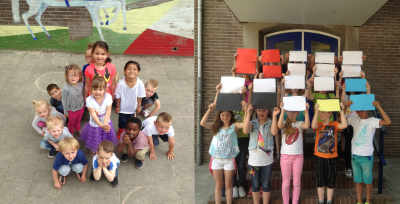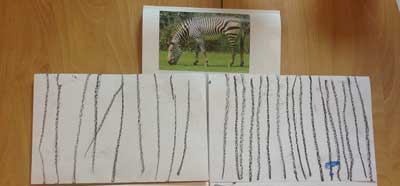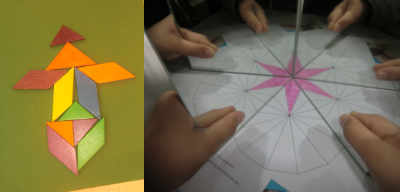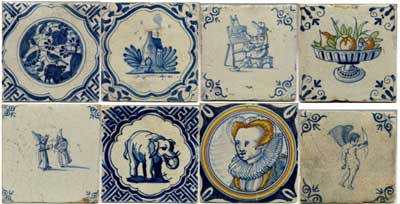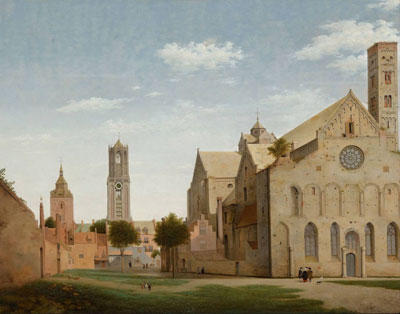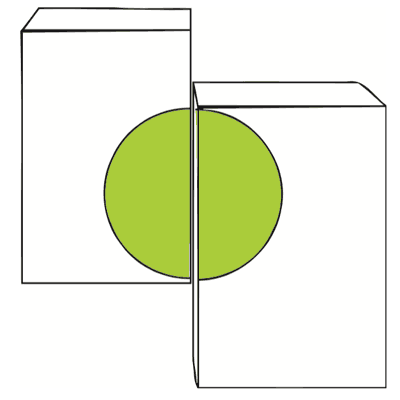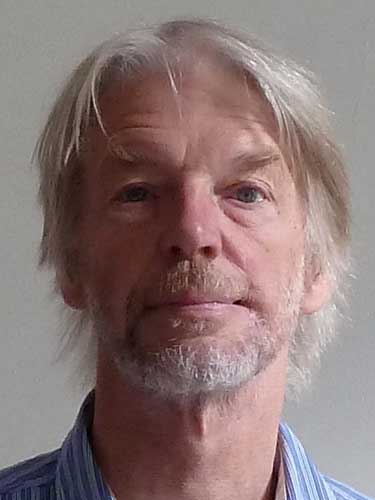
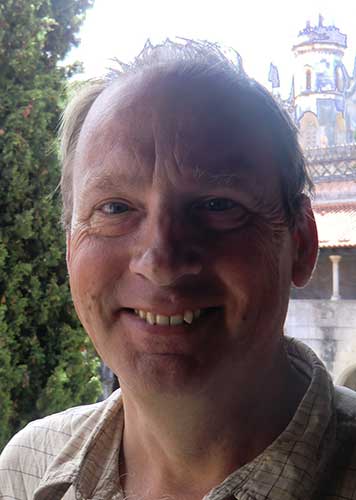
Designing a Mathematics Day
Frans van Galen and Ronald Keijzer
Utrecht University, Netherlands
Abstract
i
A group of designers share their enjoyment of designing and testing materials for the annual Big Mathematics Day, which is organized for primary schools in the Netherlands. The aim is that students and teachers get engaged in a day full of new and exciting mathematical experiences. In 2015, the theme was 'geometry and art' and the authors describe some examples of the activities. The materials for that year and earlier years can be accessed on the internet.
The Big Mathematics Day
ii
On March 23 2016 the 13th Big Mathematics Day took place in the Netherlands. This is an annual event, organized by the Education Department of Utrecht University, together with Malmberg, a Dutch publisher of educational materials. Over 1200 primary schools participated this year, about one fifth of the Dutch primary schools. At most of these schools the students did only mathematics that day. In this article we do not aim to discuss general issues of design; we just want to share the joy we have, as a group of designers, in designing and testing these materials and in seeing how students and teachers get engaged in a day full of new and exciting mathematical experiences.
Mathematics education in the Netherlands is determined, to a large extent, by the mathematics textbooks. Schools use different textbook series, almost all strongly influenced by the ideas of realistic mathematics education (RME).See: www.fisme.science.uu.nl/en/wiki/index.php/Realistic_Mathematics_Education. In general, however, the mathematical problems in these books are small and confined; the activities seem to focus more on the teaching of mathematical procedures than on developing fundamental mathematical insights. Class discussions may last 15 to 20 minutes at most; rich and open problems that invite extensive inquiry are rare. In this sense the textbooks apply a limited concept of realistic mathematics education. ‘Guided reinvention’ (Freudenthal 1991) is one of the leading principles in RME and reinvention should be based on inquiry, but this is generally limited in classes.
To show teachers and students how inquiry can be at the heart of mathematics education, we organize an annual Big Mathematics Day. The activities for this day are described in a book that is divided into sections for four grade levels: kindergarten, and ages 6-8, 8-10 and 10-12. The book is published by Malmberg, a commercial publisher, but most of the people who participate in the design team do this as unpaid volunteers. They work, or have worked, in different organizations, but all have a lot of experience in the design of educational materials.
The materials of earlier years can be downloaded free of charge from the sites of the publisher (www.groterekendag.nl) and the Freudenthal Institute(www.fisme.science.uu.nl/publicaties/subsets/groterekendag/). We warmly welcome organizations in other countries to use our materials - under creative commons - to organize similar activities.
The design process
iii
The activities for this annual Mathematics Day are developed by a fairly constant group of about 15 people. Together they choose the theme for next year and discuss some initial ideas for activities and how to achieve coherence. After this the actual design work is done in separate teams for the four different age groups.
An important constraint is that everything will be designed for just one day, and so far we have always chosen a Wednesday, because that school day is shorter at most Dutch schools. We do this to keep the threshold for schools as low as possible. Teachers, however, can easily spend more time on the activities and the book includes many suggestions to take the theme further.
Another constraint is that we want most of the activities to be done as group work. As the teacher has to collect concrete materials for most activities, the activities have to be organized in a circuit, which means that each group of students spends 20-30 minutes on a certain activity and then moves to the next one. This requires that the texts on the different work sheets should be as clear as possible, making it possible that the groups can work on their own. Most schools, however, ask parents or student-teachers to assist in the organization of the day.
Schools have a lot of freedom to organize their own version of the day. As the theme is the same for all grades, teachers can decide to borrow activities from the younger or older grades. We also see that many teachers design and add their own activities. Some schools combine classes that day, or choose other forms of organization.
Besides the constraints that have been mentioned we have a lot of freedom as designers. We often borrow ideas from our rich Dutch history in mathematics education or from international sources, but these ideas are seldomly copied literally. Brainstorming within the larger team invariably leads to many ideas and we are always tempted to pick those ideas that are novel and appeal to our creativity.
As a matter of course the activities are tested beforehand in one or more classes. Sometimes this leads to drastic adjustments that make another round of testing necessary. Given the fact that for most of the designers the Big Mathematics Day is just one of the many things they do, such an extra round of testing can be problematic, but it is, of course, inherent to designing.
Mathematics and art
iv
For this short article we shall describe some activities of the Big Mathematics Day of 2015 (Keijzer, 2015). The theme for that year was ‘geometry and art’.
In the run-up to the day we asked children to send us ‘geometry selfies’. This could be, for example, a picture of themselves with a small tree that seems to grow out of their head; in reality the tree would be a normal tree, standing 30 or more metres away. Any other picture with a relation to geometry was also welcome.
In order to make this day a shared event for the whole school, we always suggest a starting activity that involves all classes. This year our suggestion was that some classes would prepare a living piece of geometry art and present this to the other children. Figure 1 shows some examples. In the first picture the theme was 'circles' (the children form a circle and there are other circles drawn on the ground), and in the second picture, children hold up rectangles in such a way that they form a big rectangle together.
For the rest of the day each age group engages in a different set of activities. For most of the groups the activities centre around geometrical patterns. The youngest children (aged 4 and 5) for example made a bead string with rings that were made of paper strips in different colours and they laid out building blocks in patterns. They also studied the patterns on animals and tried to copy the patterns in a drawing, as shown in Figure 2.
For the children of 6 and 7 years old, most of the activities concerned patterns, such as those in Figure 3, that could be 'turned around', in other words patterns that had some form of symmetry.
Amongst other things, children of 8 and 9 years old studied pictures of traditional Delft Blue wall tiles, shown in Figure 4. These typically have symmetrical decorations in the corners and the children were asked to choose one of the tiles, make a set of similar tiles and fit them together.
The activities for the highest grades all concerned the study of perspective. In cooperation with Museum Boijmans Van Beuningen in Rotterdam, an introductory movie clip(onderwijs.boijmans.nl/grote-rekendag-2015) was made about perspective in art. This demonstrated, with paintings in their collection, how linear perspective was invented. One of the examples is a painting by Saenredam that is shown in Figure 5. The presenter shows the spot where Saenredam placed a pin in the canvas to which he could attach a piece of string that helped him with the drawing. A funny thing is that the human figures on the painting do not have the correct size!
Another of the student activities was inspired by the work of the artist Georges Rousse(youtu.be/vSQtrKtdYEg). The children were given sets of two cardboard boxes each of which had a ‘half’ of a circle or a square glued on. One ‘half’ was a bit bigger than the other and glued a bit higher, as shown in Figure 6. The students were asked to place the boxes in such a way that the halves together could be seen as one complete circle or square. There is a similar example in pop music(youtu.be/m86ae_e_ptU). In another activity the students made a so-called 3D street drawing (see examples made by artists- www.youtube.com/watch?v=a8tngtNgXl4). As we could not find a youtube clip that gives a clear explanation of the mathematical principles involved, we had to make one ourselves(www.youtube.com/watch?v=7EUdhbC4ClY).
Limitations and opportunities
v
We are not blind to the limitations of what we do. The same teachers who organize this Mathematics Day so enthusiastically will probably teach the next day from a textbook that does not leave much room for mathematical inquiry. Dutch teachers follow their textbooks quite closely and most of the teachers are hesitant to skip lessons. This means that they do not have much time for activities from other sources. So our Big Mathematics Day is an exceptional day in many respects.
We are also aware that the aims of Realistic Mathematics Education reach much further than simply adding inquiry activities to mathematics education. RME, which we consider as the basis for our work, focusses on learning trajectories that let students develop profound mathematical insights in a systematic way. The inquiry tasks in our Mathematics Day, however, are isolated activities and not part of a longer trajectory leading to specific insights.
This also colours our design work. To some extent it is more gratifying to develop a comprehensive learning trajectory for one mathematical topic, instead of just a collection of activities for a single day. At the same time, however, the Big Mathematics Day also feels like a designer’s playground, where we can design and test activities that are engaging for kids, but often lie outside the scope of conventional mathematics education. The topics of the Big Mathematics Day of 2015 that we discussed above are a good example. Geometry is a somewhat neglected strand in primary education and is seldom taught in connection with art. Also the topic of drawing in perspective is highly intriguing for many children, but it is not covered in the Dutch mathematics textbooks. In general it is seen more as a topic for art lessons. It is, however, also mathematics in ‘optima forma’.
So we hope that we may continue this initiative for many years to come. There is no financial threshold for schools to participate; they only have to purchase at least one copy of the book, for around € 70. As most of the educational design work is done by volunteers and as the publisher does not expect to make a real profit on the publication, revenue and expenditure are more or less in balance.
The satisfaction ratings that we get from the participating schools have always been flattering, quite often an average of around 8 out of 10. Of course we visit some schools on the day itself, but other schools send us links to their websites with pictures and enthusiastic reports. For us as designers it is also gratifying that we are building a rich resource of mathematical inquiry tasks which is growing year by year. The driving force for our team members, however, is probably the sheer fun of designing activities that will amaze children and get them intrigued.
References
vi


